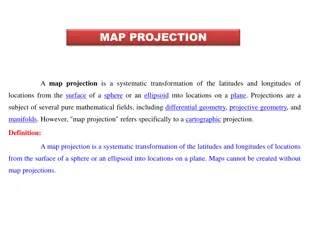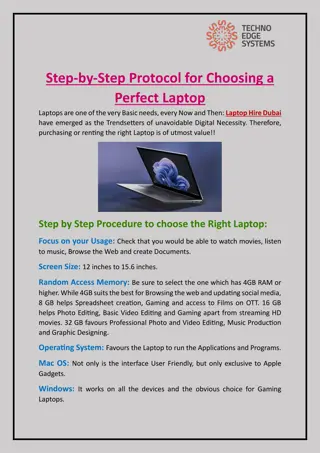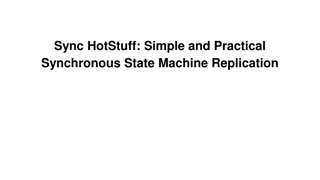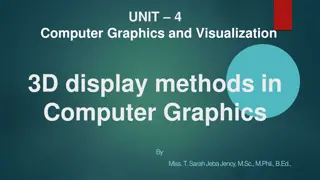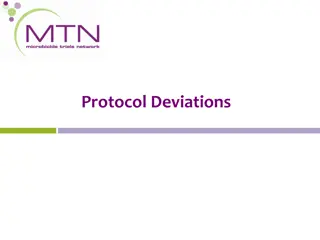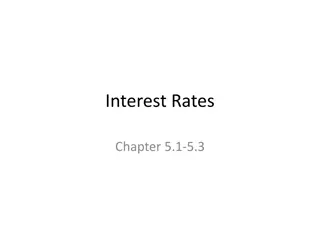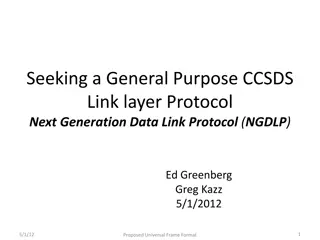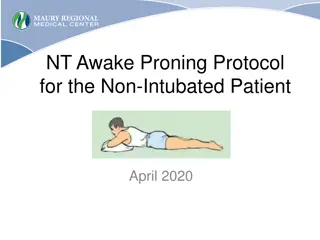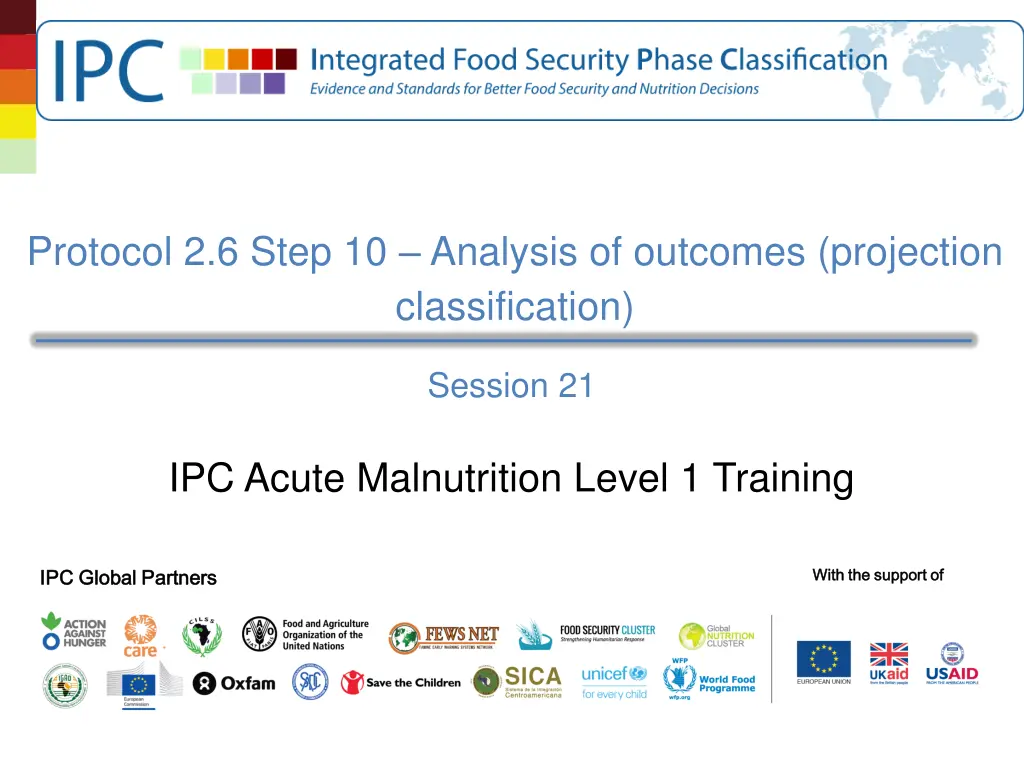
Analysis of Outcomes in Malnutrition Training Session
Explore the steps and tools for analyzing outcomes and classifying severity in a training session on Acute Malnutrition Level 1. Understand the importance of early warning signs and how changes in contributing factors can impact outcomes. Consider the potential for phase changes and historical trends in malnutrition prevalence.
Download Presentation

Please find below an Image/Link to download the presentation.
The content on the website is provided AS IS for your information and personal use only. It may not be sold, licensed, or shared on other websites without obtaining consent from the author. If you encounter any issues during the download, it is possible that the publisher has removed the file from their server.
You are allowed to download the files provided on this website for personal or commercial use, subject to the condition that they are used lawfully. All files are the property of their respective owners.
The content on the website is provided AS IS for your information and personal use only. It may not be sold, licensed, or shared on other websites without obtaining consent from the author.
E N D
Presentation Transcript
Protocol 2.6 Step 10 Analysis of outcomes (projection classification) Session 21 IPC Acute Malnutrition Level 1 Training IPC Global Partners IPC Global Partners With the support of With the support of
11 Steps to Classify Severity & Identify Drivers Step 1: Context and analysis parameters Step 2: References for evidence Step 3: Analysis of outcomes (current classification) Step 4: Analysis of evidence on contributing factors and other issues (current classification) Step 5: Phase classification (current) Step 6: Key drivers Step 7 Limitations of analysis Step 8 Priority response objectives Step 9 Analysis of evidence on contributing factors and other issues (projection classification) Step 10 Analysis of outcomes (projection classification) Step 11 Risk factors to monitor
Importance Early warning Inform programming to prepare for/respond to the changing context 3
The tools and procedures for Step 10 (2/5) Acute malnutrition is an outcome of a range of contributing factors Changes in contributing factors will impact on acute malnutrition positively or negatively There is no formula to calculate the effect In light of the review of the changes in the contributing factors, how do you expect outcome indicators to change? For example, in case of.. Most of the contributing factors are deteriorating? Is there risk of disease epidemics? Interventions? 5
The tools and procedures for Step 10 (3/5) Do you expect that a change in the outcome indicator will result in a Phase change? Consider the current prevalence of Acute Malnutrition There may be changes in GAM prevalence but they may not result in Phase change e.g.: GAM based on WHZ may move from 14% to 12%, which is still in the same Phase Need to consider the following: Current level of acute malnutrition Historical trends of acute malnutrition in the current and projection seasons Assumptions for projection 6
The tools and procedures for Step 10 (4/5) Evolution Compared to Typical: : specify, based on the historical trend data, the acute malnutrition situation in the projection period would be worse, similar, or better Likely change compared to the current: Specify compared to the current, acute malnutrition in the projection situation is likely to deteriorate, remain similar, or get better 7
The tools and procedures for Step 10 (5/5) IPC AMN Phase in the Projected Period: Indicate the projected Phase Evidence Level: Specify the evidence level i.e. Acceptable=*, Medium=**, or High=*** 8
Evidence Level Criteria for Assessment of Evidence Levels projection * Acceptable (E1) ** *** Medium (E2) High (E3) 1) IPC Current adhering to E1 + 2) Evidence used for current classification at most 12 months old at the end of projection period + 3) Two pieces of R1 evidence presented with clear assumptions on forecasted trends (Two pieces of R0 evidence for Areas with Limited Humanitarian Access) IPC Current adhering to E2 + 2) Evidence used for current classification can be at most 12 months old at the end of projection period + 3) Two pieces of R1 evidence presented with clear assumptions on forecasted trends IPC Current adhering to E3 + 2) Evidence used for current classification can be at most 12 months old at the end of projection period + 3) Two pieces of R1 evidence presented with clear assumptions on forecasted trends 9
Projection update Projection can be updated as and when new information become available, the assumptions change, etc. Typically, projection updates (rather than a new projection analysis) is done when new information (other than the one used in the projection) on contributing factors become available 10
Evidence Level Criteria for Assessment of Evidence Levels * ** *** Acceptable (E1) Medium (E2) High (E3) 1) Still Valid IPC Projection adhering E1 + 2) Evidence used for current classification at most 12 months old at the end of projection period + 3) Two new pieces of R1 evidence on contributing factors or outcomes from the season of update (Two pieces of R0 evidence for Areas with Limited Humanitarian Access) 1) Still Valid IPC Projection adhering E2 + 2) Evidence used for current classification at most 12 months old at the end of projection period + 3) Two new pieces of R1 evidence on contributing factors or outcomes from the season of update 1) Still Valid IPC Projection adhering E3 + 2) Evidence used for current classification at most 12 months old at the end of projection period + 3) Two new pieces of R1 evidence on contributing factors or outcomes from the season of update 11
FILLINGOUTANALYSISWORKSHEETSTEP 10 Exercise 21.1 Task: With your Analysis Group: Fill out the Analysis Worksheet Step 10 Discuss any observations and challenges in plenary 12
www.IPCinfo.org The End IPC Global Partners IPC Global Partners With the support of With the support of



